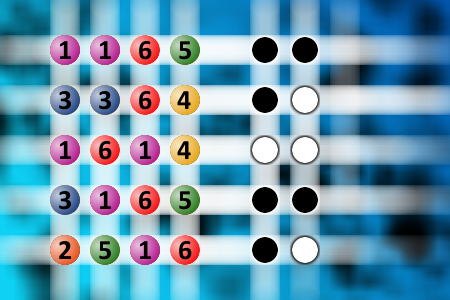Which is a winning combination of digits?
The computer chose a secret code (sequence of 4 digits from 1 to 6). Your goal is to find that code. Black circles indicate the number of hits on the right spot. White circles indicate the number of hits on the wrong spot.Correct answers: 1
#brainteasers #mastermind

Dan Cummins: Greeting Card Writer
I dont just write jokes. You know what Im best at? Greeting cards. Im a really good greeting card writer. And Im going to prove it with a little sample of my work Im going to share for you: As each day passes, you grow older, weaker. Ive been working out. Revenge is near. Happy Fathers Day

